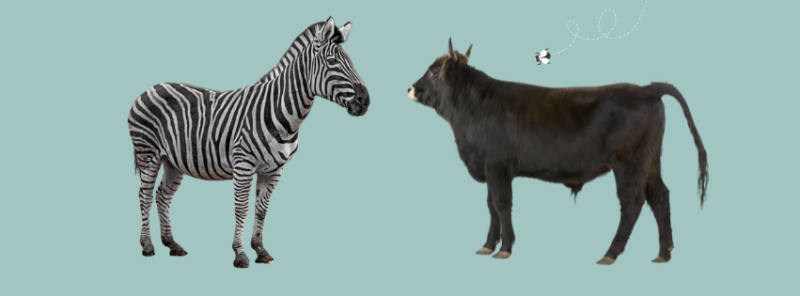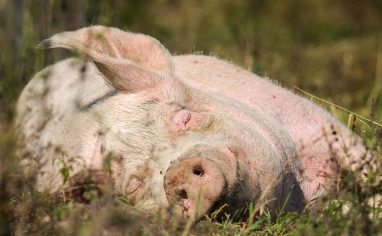
Non-Compassionate Sources
We at The Open Sanctuary Project disavow animal experimentation and any “use” of animals for human purposes. Because compassionate studies on valuing the personality, intelligence, and unique attributes of many nonhuman animals are rare, in this resource, we draw from existing work that may be non-compassionate but may, all the same, be used to improve the lives of residents. We work towards a future when compassionate, non-exploitive, and non-invasive research is the norm. Still, in the meantime, we will work with what we have to help sanctuaries help animals as effectively as possible. You can read a little bit more about our non-compassionate source policy here.
Looking to stay updated on the latest scientific insights to improve care for your residents? You’re in the right place. This is the first in our Science For Sanctuaries News Edition series (see links below) where we look at recent scientific findings and discuss how they could benefit sanctuary residents. Unlike the usual in-depth analyses in our main Science For Sanctuaries series, these brief resources will cover fewer studies, often highlighting the findings in a single study without delving into extensive discussion. Wherever possible, we seek out compassionate, non-invasive research findings. In this resource, we discuss a 2019 research article in which scientists investigated whether painting white stripes on black cows reduced the number of fly bites. This study, along with supportive studies, indicates stripes can deter flies from residents! Okay, let’s jump in!
If you are looking for more in-depth information, we recommend you check out our current Science For Sanctuary resources:
Science For Sanctuaries: Can Music Benefit Pig Residents?
Science For Sanctuaries: Do Goats Prefer Happy Faces?
Science For Sanctuaries: Can Lavender Help Horse Residents?
Science For Sanctuaries: Can Visual Barriers Help Residents?
The Study
In 2019, researchers in Japan hypothesized that painting Japanese Black cowsWhile "cows" can be defined to refer exclusively to female cattle, at The Open Sanctuary Project we refer to domesticated cattle of all ages and sexes as "cows." with white stripes could deter flies from landing on and biting them. This study was inspired by earlier research on zebras and the evolutionary purpose of their stripes. Scientists have proposed several theories to explain zebra striping, including predator confusion, thermoregulation (specifically, cooling the individual), and social communication. However, most of these hypotheses have been largely dismissed due to a lack of supporting evidence. The leading theory now is that stripes help deter biting flies—a conclusion supported by numerous studies. Some of this research has also compared different patterns to determine whether stripes are uniquely effective or if other designs, such as random checkered or plaid patterns, offer similar benefits. Interestingly, these alternative patterns have also shown potential in repelling flies. See an excerpt from the study:
Cows Painted With Zebra-Like Striping Can Avoid Biting Fly Attack | Plos One
“…Here we show that the numbers of biting flies on Japanese Black cows painted with black-and-white stripes were significantly lower than those on non-painted cows and cows painted only with black stripes. The frequencies of fly-repelling behaviors in cows painted with black-and-white stripes were also lower than those in the non-painted and black-striped cows…”
The exact mechanisms by which stripes or other patterns deter flies are still under investigation. Observations suggest that flies tend to approach animals with striped coats at high speed but fail to land, often bouncing off or flying past them. Several hypotheses have been proposed to explain this behavior, but further research is needed to draw definitive conclusions.
Additional studies have demonstrated that at least certain types of flies, specifically biting flies, are most attracted to darker areas. In one study, the color yellow repels them somewhat! When considering the needs of your residents, take into consideration the color of their coats, fiber, or feathers. During your day, take note if fly-shooing behavior differs between residents with fully dark coloring, spotted coats, and those with white or light coloring. None of this is to say that residents with lighter coloring don’t need help repelling flies. Other factors can contribute to attracting flies. No doubt you have witnessed residents with lighter coloring also performing anti-fly behaviors. Use this information to help inform your observations and care routines. This is an opportunity to see your residents through a new lens and potentially make improvements, making their lives more enjoyable. See an excerpt from the study below:
Colors That Attract Black Flies | Sciencing
“… a tabanid (horse and deer flies) -resistant coat that has appropriate brightness, colour and pattern characteristics to minimize the attraction to tabanids is advantageous for the host animals of these blood-sucking flies.”
Applications For Farmed Animal Sanctuaries
Biting flies and other biting insects, in addition to causing residents irritation and discomfort, can spread serious diseases and health issues such as equine infectious anemia, anaplasmosis, avian influenza, and fly strike. As caregivers, protecting our residents from biting insects can feel like a full-time job. Full-time Fly Swisher position, anyone? While you will never completely prevent flies from living at your sanctuary, you can take certain steps to prevent large fly populations from developing and to reduce the chances of flies harming your residents. As you may have found, fly mitigation plans require multiple strategies working in unison. The inclusion of stripes and other patterns through fly sheets and animal-safe body paints provides a compassionate approach that respects the lives of insects while protecting the well-being of residents.
As a caregiverSomeone who provides daily care, specifically for animal residents at an animal sanctuary, shelter, or rescue., your observational skills can have a big impact on a resident’s well-being. While you may not be able to conduct a professional study, you can still learn a lot by simply observing residents and taking notes. To apply what we have learned here, first observe your resident without paint or coat. Note tail swishes, ear twitches, hoof stomps, head shaking, and muscle twitches/shivers over a set amount of time. These are all examples of anti-fly behaviors. Then, matching all other factors where possible, make and record observations after putting on a striped or patterned coat or painting stripes on the same resident. Note: In some studies that the legs and heads of horses with coats on still had flies land and bite on those areas, so consider that.
Limit Variation
We mentioned repeating the “study” under the same context as a vital factor. It is important to control as much of the environment as possible to limit any interruptions or inaccurate findings. If repeating this research over a series of days, you must replicate the environmental factors as much as possible. Otherwise, this can affect the results you get and not provide you with accurate data. This is because a new factor can affect the results you might get. For example, a hot, humid day with mud in the paddock will likely attract more flies than on a dryer, windy day.
Here are some examples of things that should ideally be the same:
- Time of day
- Same caregiver
- Same social situation
- Same weather
- Same location/sights
- Same food
- Same status of the resident’s health
Animal-Safe Paints
There are some paints already on the market that are made for marking nonhuman animals (in an agricultural setting). These often come in a stick form or spray form. Never paint onto wounds or areas with rashes. While the paints used will be non-toxic, it is best to play it safe and put a small amount in one area and check for any reactions before using across a large area of the body. Everyone is different, and some may be sensitive to something in the paint, even if it is non-toxic. There are also paints marketed for horses for human entertainment purposes that could be used, though they are cost-prohibitive. Tempura paints, often used for children’s crafts, are nontoxic and washable. How long these paints will last will vary, and factors such as weather and grooming will affect this. It is always a good idea to consult your veterinarian if you have any questions or concerns.
Not For Avian Residents
While we certainly want our bird friends to be safe from biting insects, painting feathers is not recommended. Birds are also more sensitive to fumes. What may be okay for many mammalian residents may be a serious health concern for avian residents.
Fly Sheets And Masks
Fly sheets come in different varieties of colors and prints. Unfortunately, those with the most variety of patterns are generally only made for equines. However, there are some fly sheets for cows available, and ones for calves that can work for goat and sheep residents. If you don’t have time for painting or you don’t want to buy new fly sheets, you can always try painting the fly sheets, which could last longer. Another option is using animal-safe fabric dyes to paint stripes.
Things To Consider
While the findings in this study could have positive effects for some sanctuary residents, it may not be appropriate for everyone. Residents who are sensitive to touch or those who are wary about new objects and experiences may have a harder time with accepting a fly mask or sheet or standing for someone to paint stripes on them. Careful interactions that respect the individual, allowing autonomy when possible, are important in building trust and ensuring residents feel safe. Caregiver safety is also important, and care teams should plan ahead, ensuring everyone has been properly trained on how to approach residents in a safe and calm manner. Paints may be inappropriate for residents with skin issues, and a vet should be consulted before applying any topical treatments that might cause pain, discomfort, or other issues.
We hope you have found this Science For Sanctuaries News Edition helpful. As always, we would love to hear from you! If you have questions, comments, or concerns just reach out. If you choose to try the striped fly deterrent strategy and would like to share what you have learned with the rest of the community, please send your thoughts and pictures our way!
SOURCES
Cows Painted With Zebra-Like Striping Can Avoid Biting Fly Attack | Plos One (Non-Compassionate Source)
Colors That Attract Black Flies | Sciencing
Why Don’t Horseflies Land On Zebras? | Journal Of Experimental Biology
Zebra Stripes And Their Role In Dazzling Flies | Phys.Org (Non-Compassionate Source)
Zebra Stripes, Tabanid Biting Flies And The Aperture Effect | Proceedings Of The Royal Society B (Non-Compassionate Source)
How The Zebra Got Its Stripes – Biting Flies As Selective Agents In The Evolution Of Zebra Coloration | Journal Of The Entomological Society Of South Africa (Non-Compassionate Source)
How The Zebra Got Its Stripes: A Problem With Too Many Solutions | Royal Society Of Open Science (Non-Compassionate Source)
Benefits Of Zebra Stripes: Behaviour Of Tabanid Flies Around Zebras And Horses | Plos One (Non-Compassionate Source)
Zebras Of All Stripes Repel Biting Flies At Close Range | Scientific Reports (Non-Compassionate Source)
Non-Compassionate Source?
If a source includes the (Non-Compassionate Source) tag, it means that we do not endorse that particular source’s views about animals, even if some of their insights are valuable from a care perspective. See a more detailed explanation here.








